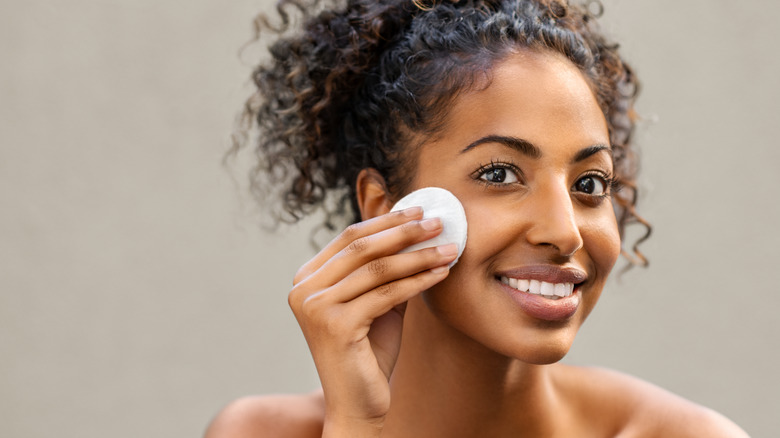Before slathering on every skincare product that you can get your hands on, it’s important to first understand what sort of skin type you possess in order to best suit the needs of your skin.
According to Allure, there are several ways to tell if you possess one of the most common skin types – combination skin. You likely have combination skin if you find that only certain areas of your skin are oily after washing your face with a cleanser. Additionally, if your T-zone is slick-looking and you get breakouts and dry patches at the same time, you might have combination skin.
Essentially, the combination skin type encapsulates those who feel as though they have oily and dry skin at the same time. In order to find the perfect skin routine for your combination skin, you’ll need to find one that can treat your dry and oily skin simultaneously. “The concept of combination skin is that you’re oily in some places and dry in others,” esthetician Renée Rouleau told Byrdie. “You don’t necessarily want to use two different routines, but instead find one in the middle of the road.”
Before purchasing products to complete your skincare routine, Who What Wear pointed out that it is important to hydrate your combination skin with water-based products rather than oil-based products since your skin actually already produces enough oil.
Combination skincare routines are all about maintaining a proper balance
Though your skincare routine does not need to be overly complex, washing your face with a simple cleanser is not likely to do your combination skin any favors.
According to Byrdie, those with combination skin should be using a cleansing gel, toner, AHA/BHA serum, lightweight moisturizer, and zinc oxide sunscreen every morning. At night, you should be slathering on a cleansing gel, toner, lightweight moisturizer, and retinol serum. Combination skin types should always opt for a lightweight moisturizer that won’t add unneeded oil to the skin. Zinc oxide sunscreen is also perfect for those with oily skin, as it leaves a matte finish.
Before diving into a new skincare routine, however, it’s always best to consult with a dermatologist or professional first. “Even patients with oily skin can experience false dryness, which can be, if diagnosed at home, incorrectly perceived to be what people refer to as combination skin,” Sameer Bashey, MD, told Who What Wear. “Many symptoms, such as excessive dryness or inflammation, can be symptoms for underlying skin conditions, such as rosacea or eczema.” Bashay also pointed out the fact that our skin changes as we age, so it’s important that we pay attention to our skin as it loses volume and elasticity over the years in order to change up our skincare routine as we age.
Source: Read Full Article

